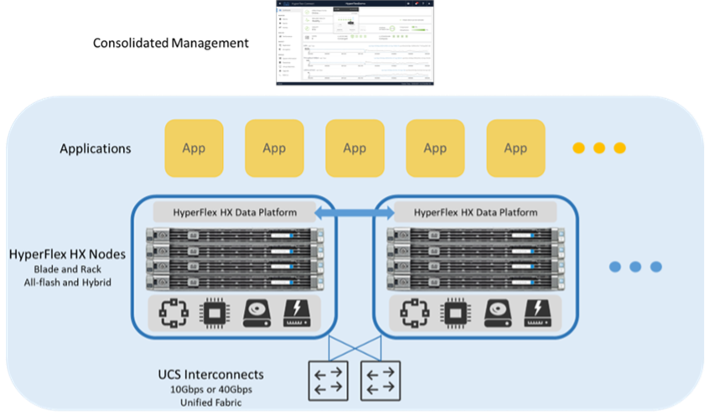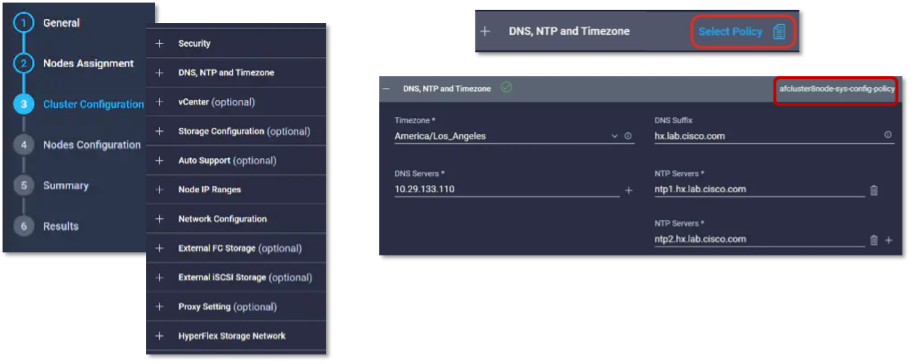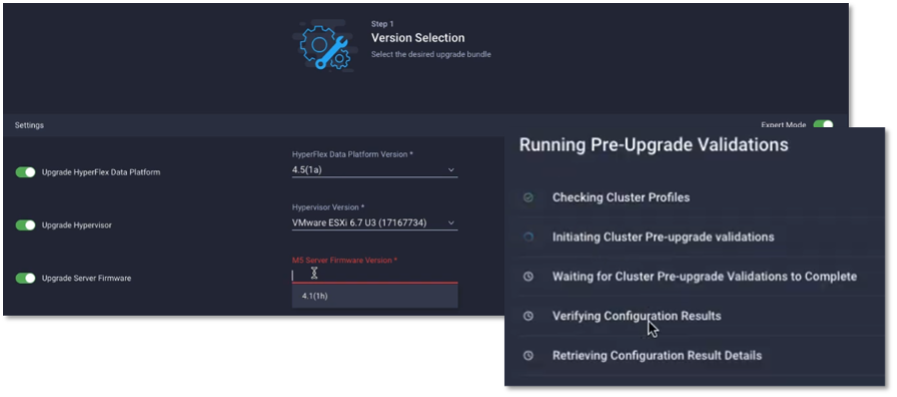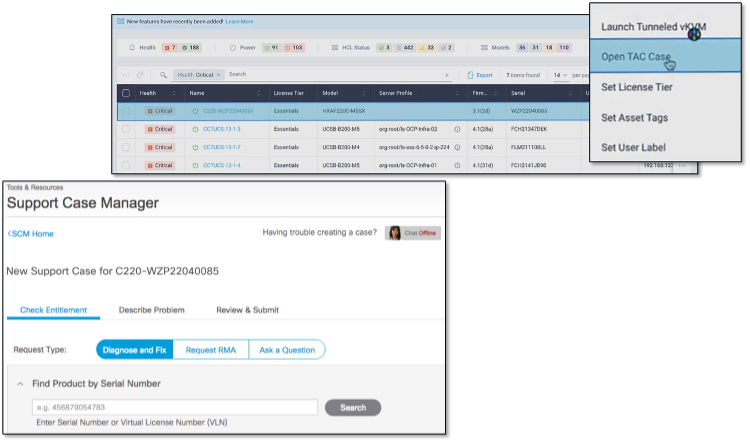
Brought to you by:
Enterprise Strategy Group | Getting to the Bigger Truth™
TECHNICAL VALIDATION
Analyzing the Benefits of Deploying Cisco HyperFlex in a Global Financial Services Institution
DIGITAL TRANSFORMATION:
The CIO Imperative
The Multicloud Opportunity for Partners with Dell APEX
By Alex Arcilla, Senior Validation Analyst
AUGUST 2022
Introduction
Background
Figure 1. Greatest Influences on Data Center Infrastructure Purchases
Which of the following buying criteria will have the greatest influence on your organization’s data center infrastructure purchase? (Percent of respondents, N=303, three responses accepted)
Source: ESG, a division of TechTarget, Inc.
Cisco HyperFlex
Figure 2. Cisco HyperFlex Architecture

Cisco HyperFlex HX Data Platform. The core of any HCI solution is the software platform, and the HX Data Platform was engineered specifically for HCI software-defined storage. Operating as a controller on each node, the HX Data Platform is a high-performance, distributed file system that combines all SSD and HDD capacity across the cluster into a distributed, multi-tier, object-based data store, striping data evenly across the cluster. It also delivers enterprise data services such as snapshots, thin provisioning, and instant clones. Policy-based data replication across the cluster ensures high availability. Dynamic data placement in memory, cache, and capacity tiers optimize application performance, while inline, always-on deduplication and compression optimize capacity.
The HX Data Platform handles all read and write requests for volumes accessed by the hypervisor. By striping data evenly across the cluster, network and storage hotspots are avoided, and VMs enjoy optimal I/O performance regardless of location. Writes go to local SSD or NVMe cache and are replicated to remote SSDs in parallel before the write is acknowledged. Reads are from cache, if possible, or are retrieved from remote SSDs.
The log-structured file system is a distributed object store that uses a configurable SSD or NVMe cache to speed reads and writes, with capacity in HDD (hybrid), SSD (all-flash), or all-NVMe persistent tiers. When data is de-staged to persistent tiers, a single sequential operation writes data to enhance performance. Inline deduplication and compression occur when data is de-staged; data is moved after the write is acknowledged so there is no performance impact.
Cisco’s partnerships with Cohesity and Veeam enable customers with data protection capabilities to address secondary data requirements, including target storage, backup, replication, and disaster recovery, so as to meet stringent RTOs and RPOs.
Cisco UCS compute-only nodes. Both UCS blade and rack servers can be combined in the cluster, with a single network hop between any two nodes for maximum east-west bandwidth and low latency. HyperFlex lets you alter the ratio of CPU-intensive blades or servers—compute nodes—to storage-intensive capacity nodes—HX nodes—so users can optimize the system as application needs shift.
Cisco Unified Fabric. UCS 6200/6300/6400 Fabric Interconnects enable software-defined networking. High bandwidth, low latency, and 10/25/40Gbps connectivity in the fabric enable high availability as data is securely distributed and replicated across the cluster. The network enables HX clusters to scale easily and securely. The single hop architecture is designed to maximize the efficiency of the storage software to enhance overall cluster performance.
Cisco Application Centric Infrastructure (ACI) for automated provisioning. ACI enables automation of network deployment, application services, security polices, and workload placement per defined service profiles. This provides faster, more accurate, more secure, lower cost deployments. ACI automatically routes traffic to optimize performance and resource utilization and reroutes traffic around hotspots for optimal performance.
Choice of industry-leading hypervisors, including VMware ESXi and vCenter, Microsoft Hyper-V, and Cisco Intersight Workload Engine (IWE). Cisco IWE enables container-native virtualization for Cisco HyperFlex.
Cisco HyperFlex delivers numerous benefits, including:
High performance. In addition to performance features mentioned above, HyperFlex Dynamic Data Distribution securely and evenly distributes data across all cluster nodes to reduce bottlenecks.
Fast, easy deployment. This pre-integrated cluster can be deployed just by plugging into the network and applying power. Node configuration and connection is handled through Cisco UCS service profiles. Cisco says that customers report typical deployment times of less than one hour.
Consolidated management. Systems are monitored and managed through Cisco Intersight, VMware vCenter plugin, or Cisco HyperFlex Connect, which eliminates separate management silos for compute and storage. HyperFlex Connect lets organizations manage and monitor clusters from anywhere and at any time with metrics and trends to support the entire management lifecycle.
Independent scaling. Different from other HCI systems, HyperFlex can independently scale compute and storage resources without the need to add full nodes to the cluster. Users can easily incorporate compute-only nodes with bare UCS servers through the Fabric Interconnects to add additional compute to the cluster or, if more storage is needed, add individual drives to each node; data is automatically rebalanced. This provides the right resources for different application needs instead of scaling in predefined node increments that also add additional software licensing costs.
ESG Technical Validation
Simplicity of Installation
ESG Review
Figure 3. Menu-driven Workflow for Creating Cisco HyperFlex Cluster with Intersight

Figure 4. Simplified Network Configuration with Cisco Intersight

Why this matters
Simplicity of Performing Maintenance Upgrades
ESG Review
Figure 5. Performing Full Stack Firmware Upgrade

Figure 6. Initiating Firmware Upgrades of Cisco HyperFlex Components

Why this matters
Product Resiliency
ESG Review
Why this matters
Quality of Post-sales Support
ESG Review
Figure 7. Generating Cisco TAC Case via Intersight

Why this matters
The Bigger Truth
This ESG Technical Validation was commissioned by Cisco Systems, Inc. and is distributed under license from TechTarget, Inc.
All product names, logos, brands, and trademarks are the property of their respective owners. Information contained in this publication has been obtained by sources TechTarget, Inc. considers to be reliable but is not warranted by TechTarget, Inc. This publication may contain opinions of TechTarget, Inc., which are subject to change. This publication may include forecasts, projections, and other predictive statements that represent TechTarget, Inc.’s assumptions and expectations in light of currently available information. These forecasts are based on industry trends and involve variables and uncertainties. Consequently, TechTarget, Inc. makes no warranty as to the accuracy of specific forecasts, projections or predictive statements contained herein.
This publication is copyrighted by TechTarget, Inc. Any reproduction or redistribution of this publication, in whole or in part, whether in hard-copy format, electronically, or otherwise to persons not authorized to receive it, without the express consent of TechTarget, Inc., is in violation of U.S. copyright law and will be subject to an action for civil damages and, if applicable, criminal prosecution. Should you have any questions, please contact Client Relations at cr@esg-global.com.

Enterprise Strategy Group | Getting to the Bigger Truth™
Enterprise Strategy Group is an IT analyst, research, validation, and strategy firm that provides market intelligence and actionable insight to the global IT community.
